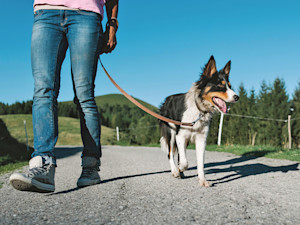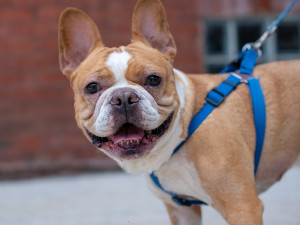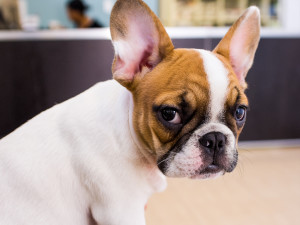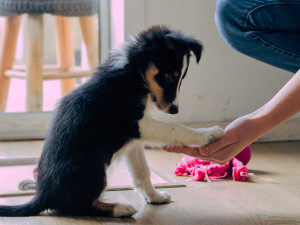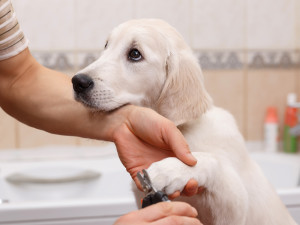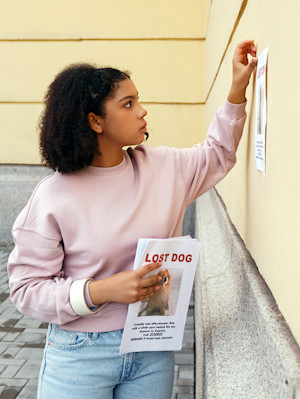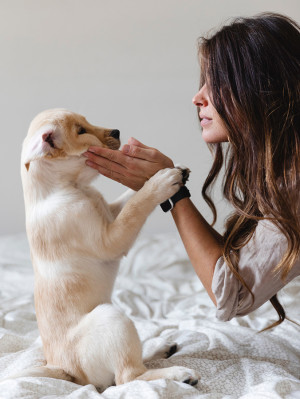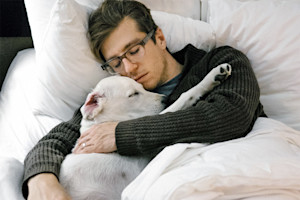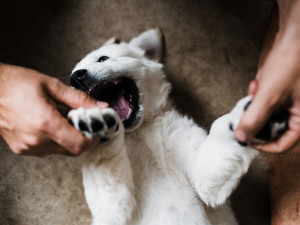New Puppy Essentials: Everything You Need
We’ve thought of everything, so you don’t have to
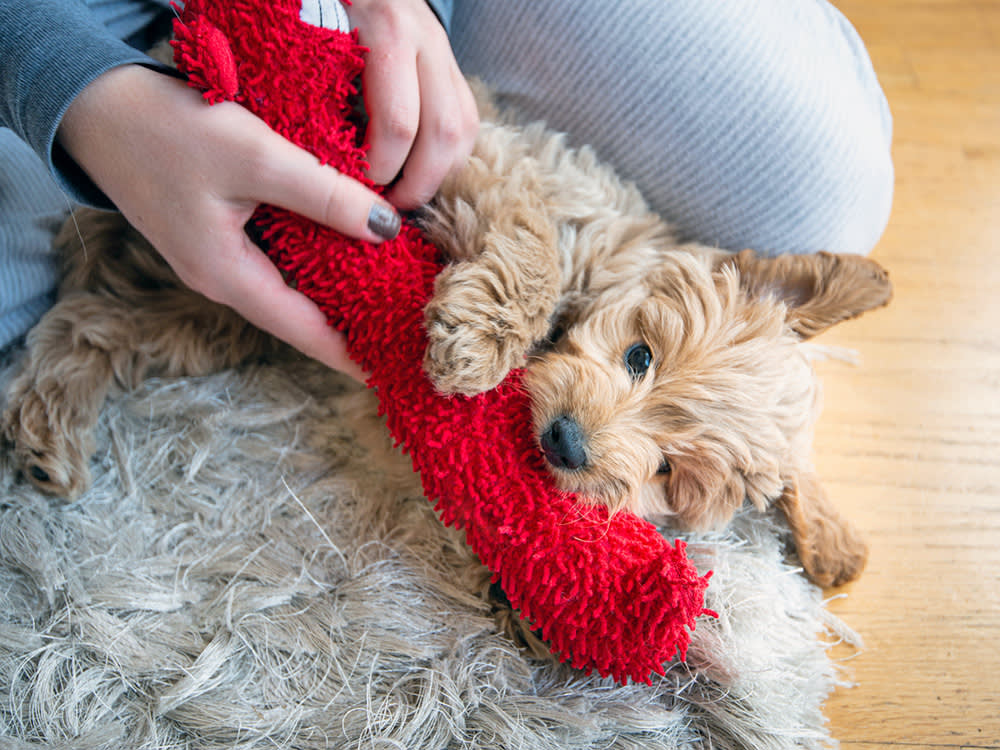
Share Article
In this article:
Preparing your homeopens in a new tab Puppy foodopens in a new tab Accessoriesopens in a new tab Toysopens in a new tab Bedsopens in a new tab Healthcareopens in a new tab Trainingopens in a new tab Groomingopens in a new tab Safetyopens in a new tab Puppy essentials FAQsopens in a new tab
Welcoming a puppy into your family is an exciting adventure, filled with adorable puppy eyes, wagging tails and endless cuddles. To ensure your puppy’s transition into your home is smooth and happy for everyone, preparation is keyopens in a new tab.
Whether you’re a new pet parent or it’s been a while since your last pet and you need a refresher course in puppy 101, this guide will help you create a strong bond with your new dog while ensuring their safety and happiness.

littleKin™ is Kinship’s home just for puppy and kitten parents. Bop over to check out expert advice, new pet tools, and special deals—all curated for your newest family member.
opens in a new tabMain takeaways
Preparing for your new pup’s arrival can prevent common problems from arising and ensure a smooth start for life together.
Young puppies need plenty of sleep and rest to grow and learn effectively.
It’s important to familiarise yourself with the UK rules and regulations for having a dog.
Preparing your home
Getting your home ready for a new puppy is as essential as preparing for a new baby. It’s exciting to choose out all the things you might need (and no doubt lots you don’t) to enjoy those first few weeks together, stress-free.
Puppy-proofing your home
Puppies are naturally curious and explore their environment primarily through their mouths, which makes puppy-proofing your home essential.
To create a puppy-safe home, start by getting down to their eye level and looking around you. Hide any loose wires behind furniture or tape them down, and secure items such as floor lamps or shelving units that could potentially be knocked over. Remove or elevate breakable items, plants and anything you wouldn’t want to be damaged or chewed.
As your puppy moves through their various stages of developmentopens in a new tab, you will start to be able to relax a little more and return your home to how it was before.
Food for your puppy
Choosing food
To avoid upset tummy for your new family member, stick with the food your puppy is used to – the same as the breeder, foster or rescue centre was feeding them – for the first few days before transitioning gradually to your preferred choice.
There are various decisions to consider: types of food such as dry food or wet food; your budget; how much food your dog will need to consume (based on size and activity levels); and practical implications such as freezer or cupboard space.
Providing your dog with the best diet you can afford will help them to thrive both physically and emotionally. Seek advice from your vet and pet shops before making an informed decision based on your and your dog’s needs.
Creating a feeding schedule
Puppies need small, frequent meals to avoid potential digestive issues such as bloat. Begin with four small meals a day, gradually transitioning to three, and then two by around six months old. Schedule meals with enough time before bedtime for toilet trips to ensure restful nights. Puppies prone to hunger chunders may need a small bedtime snack.
Collar, harness and lead
To protect your dog’s body, a harness is generally the kindest choice of walking equipment for puppies. Look for one with a Y-shaped front to it and which does up with multiple connection points so you don’t have to slide it over their head (which many dogs dislike).
As your dog grows you may want to ditch the harness for walks and heel training (you can still use it in a car, for security) so that you have slightly more control over the many directions your pup will inevitably like to run in.
A collar is also useful to display their ID tag. A short, fixed-length, standard lead is best for most walks, but consider a 5–10m training (flexible) lead for when they’re in training, you don’t feel confident in letting them off the lead, they’ve just been spayed or neutered, or to still let them explore if they’re a flight risk.
Toys
Playing with your dog is a great way to bond with them – it can solidify social connections and help teach them invaluable skills by using toys as positive reinforcement.
Toy preferences vary by breed and individual temperament – Terriers may enjoy squeaky toys, while Retrievers often prefer items they can easily carry. Start with just a few best dog productsopens in a new tab to gauge your puppy’s preferences before expanding your collection of toys.
Bed and crate
One of the most important things for dogs of all ages – but especially for puppies – is sleep. At a young age, they’ll ideally be sleeping or resting for up to 18–20 hours each day.
Some dogs find a crate comforting – a special space where they can relax and feel comfortable with solo time. Others may struggle with confinement or being away from you in the early days (though eventually crate training your pupopens in a new tab can be an invaluable tool).
Whether you use a crate or not, get your dog a nice warm and supportive bed that allows them to sleep either stretched out or curled up.
Healthcare
Puppies in the UK must be microchipped by eight weeks old, so this is typically done by the dog’s breeder or at the rescue centre. Once home, focus on their booster vaccination schedule and general well-being. Consider pet insurance to cover unexpected medical costs. Monthly premiums are often more manageable than saving large sums for emergencies.
Initial vet visits
Vet visits can be overwhelming for puppies due to the handling process, unfamiliar places, smells, people and other dogs. Ease their experience by adding in regular short, positive visits to the vets, offering treats or practising training exercises in the waiting room or car park. (Your local vets are often very happy to oblige with some treats or pats to make the process more enjoyable for your pup).
You can prepare your pup to be comfortable being examined by gradually building up to touching more sensitive areas such as face and mouth with positive reinforcement (reward them when they let you touch them for one second, then build up the time, eventually allowing you to ‘examine��’ them from home). When being examined by the vet, support your dog and offer them positive reinforcement to counteract the handling experience.
Training
Training your puppyopens in a new tab is more than simply just teaching them obedience skills. It helps solidify your connection and can help to keep them safe out in the big bad world.
Set up a training scheduleopens in a new tab of short sessions (3–5 minutes) a few times daily, as young puppies can’t focus for long periods. Start with basics such as name recognition and settling before progressing to recall and lead walking.
Grooming
While some breeds require more regular grooming than others, all dogs will need some element of care at times. Whether it’s a bath after rolling in eau de fox poo or being towelled off after a particularly wet and muddy walk, it’s important to get all dogs used to being groomed in a positive manner.
Introduce brushing, towelling and nail trimming with plenty of rewards to create positive experiences. Start toothbrushingopens in a new tab early, and build up to full grooming sessions gradually if visiting a professional.
Safety
When making a checklistopens in a new tab of all the things you need to do as a new pet parent, include safety measures to protect them from harm.
Avoid escapes
Puppies love to explore, so it’s important to check the boundaries of your garden (if you have one) for small holes in the fence/wall/hedge that they could escape from and secure all gates. Keep your puppy on a lead or behind a second, closed door when the front door is open.
Use a long training lead in parks or woods until you’re confident your puppy will come back to you. Keep microchip details updated, especially if you move house.
Injuries inside your home
Prevent injuries by puppy-proofing and avoiding leaving them unsupervised in a crate with collars or harnesses. Limit stairs and jumping until they’re physically mature as it can cause damage to their joints.
For some dogs, particularly those with long backs (such as Dachshunds and Basset Hounds), it can be useful to teach them to climb up and down steps or a ramp onto your sofa if you’re welcoming them up there.
Theft
Puppies are prime targets for theft. Never leave them unattended in public or in a car. Regularly photograph your puppy (as if we have to tell you), focusing on unique markings, as a precaution.
Dog-safe foods
While it can be tempting to treat your pup to a little snack from your own plate, make sure the foods you’re feeding them are actually safe for dogs to consume. The list of unsafe foods for dogsopens in a new tab includes grapesopens in a new tab, raisins, chocolateopens in a new tab, onion, caffeine, alcohol and cooked bones, among others. When in doubt, stick to dog-specific treats.
Puppy essentials frequently asked questions
What do you need for a new puppy in the UK?
From a welfare perspective, you are required to ensure your dog is free from harm with all their basic needs met – including food, water and shelter. Dogs should be free to move naturally, expressing themselves normally and they need to have access to appropriate healthcare when required. It’s also required by law in the UK that your puppy has been microchipped and, in public, they must wear an ID tag displaying your name, address and phone number.
Of course, as loving pet parents you’ll probably want to give them a lot more than that. Cuddly toys, treats, blankets and accessories are some of the top puppy purchases.
What are the essentials for having a puppy?
Puppies need a nutritious diet, fresh water, a comfortable sleeping area, time for training and play, and regular vet care. Insurance, while optional if your dog isn’t on the list of banned breeds in the UKopens in a new tab, can offer financial security.
What is the puppy 1:2 rule?
For every hour a puppy is active, they should rest for 2–3 hours. Quality rest prevents overstimulation, reducing hyperactive behaviours such as zoomies and excessive biting.

Caroline Wilkinson
Caroline Wilkinson is a Certified Animal Behaviourist. As the Founder of digital pet coaching service Barket Place, Caroline has a passion for improving connections between human and hound, with a focus on relationships and reduction of stress for canines living in a human world.
Related articles
![Woman playing with her puppy.]() opens in a new tab
opens in a new tabCan Puppies Lose Their Teeth? Baby Teeth In Puppies
Whether you should save them for the tooth fairy is another issue entirely
![dog and person sleeping in bed]() opens in a new tab
opens in a new tabIs Your Pup a ‘Velcro Dog’?
Is your dog overly clingy? Here’s how to help them build independence
![Golden retriever puppy upside down playing with a mans hands and attempting to play bite.]() opens in a new tab
opens in a new tabHow to Stop Puppy Biting: Training Your Puppy
Because bite marks are not a good look
